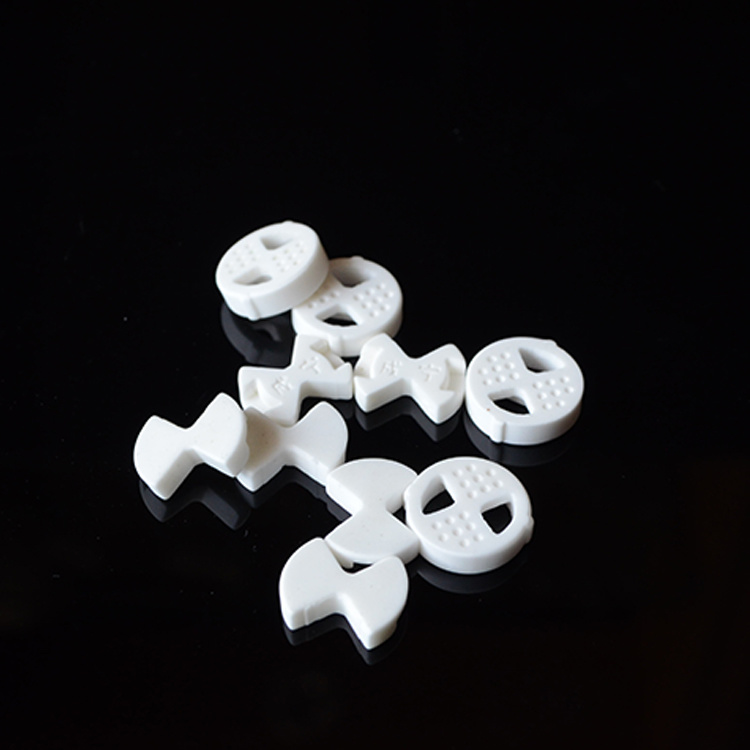
The Role of Laboratory Porcelain Fire Assay Crucibles in Ensuring Accurate Assay Results
Time:
2023-08-31 09:41
Source:
**Table of Contents**
1. Introduction
2. Understanding Laboratory Porcelain Fire Assay Crucibles
3. The Significance of Crucibles in Assay Process
4. Properties and Qualities of Laboratory Porcelain Fire Assay Crucibles
5. Benefits of Using Laboratory Porcelain Fire Assay Crucibles
6. Choosing the Right Crucibles for Accurate Assay Results
7. Frequently Asked Questions (FAQs)
8. Conclusion
## 1. Introduction
Welcome to this comprehensive guide on the role of laboratory porcelain fire assay crucibles in ensuring accurate assay results. In this article, we will delve into the importance of these crucibles, their properties, benefits, and how to select the right crucibles for your assay needs.
## 2. Understanding Laboratory Porcelain Fire Assay Crucibles
Laboratory porcelain fire assay crucibles are specialized containers used in the fire assay process, a widely adopted method for determining the composition of precious metals such as gold and silver. These crucibles are designed to withstand high temperatures and harsh conditions required for the assay process.
## 3. The Significance of Crucibles in Assay Process
Crucibles play a vital role in the assay process as they hold the sample material and flux during the heating process. Their heat-resistant nature ensures that the sample is heated uniformly, allowing for accurate analysis of precious metal content.
## 4. Properties and Qualities of Laboratory Porcelain Fire Assay Crucibles
Laboratory porcelain fire assay crucibles possess several important properties and qualities that contribute to their effectiveness in ensuring accurate assay results. These include:
- High heat resistance: Crucibles are capable of withstanding extreme temperatures, ensuring optimal conditions for the assay process.
- Chemical inertness: Porcelain crucibles are chemically inert, preventing contamination of the sample material during heating.
- Physical durability: They are resistant to cracking or breaking, ensuring the integrity of the assay process.
- Low thermal expansion: Crucibles exhibit minimal thermal expansion, minimizing the risk of sample loss or inaccurate readings.
## 5. Benefits of Using Laboratory Porcelain Fire Assay Crucibles
Using laboratory porcelain fire assay crucibles offers several benefits for accurate assay results. These include:
- Consistency: The uniformity of crucible materials and design ensures consistent assay conditions.
- Reliable analysis: Porcelain crucibles provide reliable measurements by minimizing the risk of contamination or sample loss.
- Cost-effectiveness: Their durability and reusability make them a cost-effective choice for laboratories.
## 6. Choosing the Right Crucibles for Accurate Assay Results
Selecting the appropriate crucibles is essential for obtaining accurate assay results. Consider the following factors when choosing crucibles:
- Material compatibility: Ensure the crucibles are compatible with the sample material and flux used in your assay process.
- Size and capacity: Select crucibles that accommodate the required sample size to avoid overcrowding or insufficient space.
- Quality and brand reputation: Choose reputable manufacturers known for producing high-quality crucibles.
- Expert recommendations: Consult industry experts or experienced professionals for guidance on suitable crucibles for your specific assay needs.
## 7. Frequently Asked Questions (FAQs)
Q1: Are laboratory porcelain fire assay crucibles reusable?
A1: Yes, these crucibles are reusable due to their high durability and resistance to cracking.
Q2: Can I use porcelain crucibles for non-precious metal assays?
A2: Porcelain crucibles are primarily designed for precious metal assays. Consult with experts to determine suitability for non-precious metal analysis.
Q3: What is the maximum temperature that porcelain crucibles can withstand?
A3: Laboratory porcelain fire assay crucibles can typically withstand temperatures up to 1600°C (2912°F).
Q4: Can porcelain crucibles be used in automated assay processes?
A4: Yes, certain porcelain crucibles are designed for compatibility with automated assay systems. Ensure compatibility before use.
Q5: How can I clean and maintain laboratory porcelain fire assay crucibles?
A5: Clean crucibles thoroughly after each use and inspect for any damage. Follow manufacturer guidelines for proper cleaning and storage.
## 8. Conclusion
In conclusion, laboratory porcelain fire assay crucibles play a crucial role in ensuring accurate assay results. Their unique properties, durability, and heat resistance contribute to reliable analysis of precious metal content. By choosing the right crucibles and following recommended practices, laboratories can achieve precise assay results and enhance their overall operational efficiency.
1. Introduction
2. Understanding Laboratory Porcelain Fire Assay Crucibles
3. The Significance of Crucibles in Assay Process
4. Properties and Qualities of Laboratory Porcelain Fire Assay Crucibles
5. Benefits of Using Laboratory Porcelain Fire Assay Crucibles
6. Choosing the Right Crucibles for Accurate Assay Results
7. Frequently Asked Questions (FAQs)
8. Conclusion
## 1. Introduction
Welcome to this comprehensive guide on the role of laboratory porcelain fire assay crucibles in ensuring accurate assay results. In this article, we will delve into the importance of these crucibles, their properties, benefits, and how to select the right crucibles for your assay needs.
## 2. Understanding Laboratory Porcelain Fire Assay Crucibles
Laboratory porcelain fire assay crucibles are specialized containers used in the fire assay process, a widely adopted method for determining the composition of precious metals such as gold and silver. These crucibles are designed to withstand high temperatures and harsh conditions required for the assay process.
## 3. The Significance of Crucibles in Assay Process
Crucibles play a vital role in the assay process as they hold the sample material and flux during the heating process. Their heat-resistant nature ensures that the sample is heated uniformly, allowing for accurate analysis of precious metal content.
## 4. Properties and Qualities of Laboratory Porcelain Fire Assay Crucibles
Laboratory porcelain fire assay crucibles possess several important properties and qualities that contribute to their effectiveness in ensuring accurate assay results. These include:
- High heat resistance: Crucibles are capable of withstanding extreme temperatures, ensuring optimal conditions for the assay process.
- Chemical inertness: Porcelain crucibles are chemically inert, preventing contamination of the sample material during heating.
- Physical durability: They are resistant to cracking or breaking, ensuring the integrity of the assay process.
- Low thermal expansion: Crucibles exhibit minimal thermal expansion, minimizing the risk of sample loss or inaccurate readings.
## 5. Benefits of Using Laboratory Porcelain Fire Assay Crucibles
Using laboratory porcelain fire assay crucibles offers several benefits for accurate assay results. These include:
- Consistency: The uniformity of crucible materials and design ensures consistent assay conditions.
- Reliable analysis: Porcelain crucibles provide reliable measurements by minimizing the risk of contamination or sample loss.
- Cost-effectiveness: Their durability and reusability make them a cost-effective choice for laboratories.
## 6. Choosing the Right Crucibles for Accurate Assay Results
Selecting the appropriate crucibles is essential for obtaining accurate assay results. Consider the following factors when choosing crucibles:
- Material compatibility: Ensure the crucibles are compatible with the sample material and flux used in your assay process.
- Size and capacity: Select crucibles that accommodate the required sample size to avoid overcrowding or insufficient space.
- Quality and brand reputation: Choose reputable manufacturers known for producing high-quality crucibles.
- Expert recommendations: Consult industry experts or experienced professionals for guidance on suitable crucibles for your specific assay needs.
## 7. Frequently Asked Questions (FAQs)
Q1: Are laboratory porcelain fire assay crucibles reusable?
A1: Yes, these crucibles are reusable due to their high durability and resistance to cracking.
Q2: Can I use porcelain crucibles for non-precious metal assays?
A2: Porcelain crucibles are primarily designed for precious metal assays. Consult with experts to determine suitability for non-precious metal analysis.
Q3: What is the maximum temperature that porcelain crucibles can withstand?
A3: Laboratory porcelain fire assay crucibles can typically withstand temperatures up to 1600°C (2912°F).
Q4: Can porcelain crucibles be used in automated assay processes?
A4: Yes, certain porcelain crucibles are designed for compatibility with automated assay systems. Ensure compatibility before use.
Q5: How can I clean and maintain laboratory porcelain fire assay crucibles?
A5: Clean crucibles thoroughly after each use and inspect for any damage. Follow manufacturer guidelines for proper cleaning and storage.
## 8. Conclusion
In conclusion, laboratory porcelain fire assay crucibles play a crucial role in ensuring accurate assay results. Their unique properties, durability, and heat resistance contribute to reliable analysis of precious metal content. By choosing the right crucibles and following recommended practices, laboratories can achieve precise assay results and enhance their overall operational efficiency.
laboratory porcelain fire assay crucible

